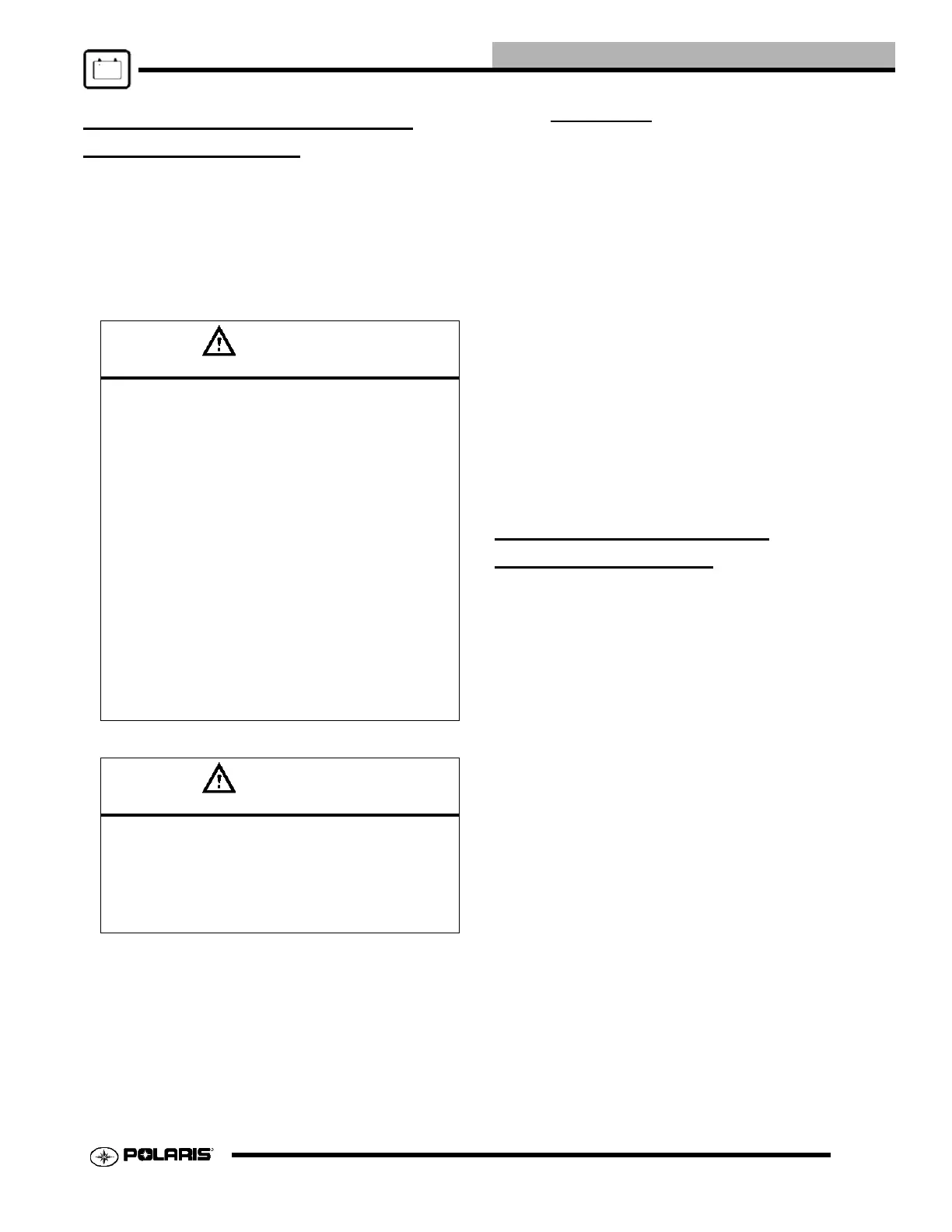9.19
ELECTRICAL
CONVENTIONAL BATTERY
ACTIVATION/ SVC
To ensure maximum service life and performance from a
battery, perform the following steps.
NOTE: This section contains information for both
Conventional Lead-Acid batteries and Sealed Low
Maintenance batteries. Before service, identify the battery
type in the vehicle. Use the section that applies to the
battery.
NOTE: New Battery:
Battery must be fully charged
before use or battery life will be significantly reduced 10-
30% of the battery’s full potential.
To activate a new battery:
1. Remove vent plug from vent fitting. Remove cell caps.
2. Fill battery with electrolyte to upper level marks on case.
3. Set battery aside to allow for acid absorption and
stabilization for 30 minutes.
4. Add electrolyte to bring level back to upper level mark on
case. NOTE: This is the last time that electrolyte should be
added. If the level becomes low after this point, add only
distilled water.
5. Charge battery at 1/10 of its amp/hour rating. Examples: 1/
10 of 9 amp battery = .9 amp; 1/10 of 14 amp battery = 1.4
amp; 1/10 of 18 amp battery = 1.8 amp (recommended
charging rates).
6. Check specific gravity of each cell with a hydrometer to
assure each has a reading of 1.270 or higher.
BATTERY TERMINALS/
TERMINAL BOLTS
Use Polaris corrosion resistant Nyogel™ grease (PN 2871329)
on battery bolts. See Battery Installation.
WARNING
Battery electrolyte is poisonous. It contains sulfuric
acid. Serious burns can result from contact with
skin, eyes or clothing. Antidote:
External: Flush with water.
Internal: Drink large quantities of water or milk. Fol-
low with milk of magnesia, beaten egg, or vegetable
oil. Call physician immediately.
Eyes: Flush with water for 15 minutes and get
prompt medical attention.
Batteries produce explosive gases. Keep sparks,
flame, cigarettes etc. away. Ventilate when charg-
ing or using in an enclosed space. Always shield
eyes when working near batteries. KEEP OUT OF
REACH OF CHILDREN.
WARNING
The gases given off by a battery are explosive. Any
spark or open flame near a battery can cause an
explosion which will spray battery acid on anyone
close to it. Should there be contact with battery ac-
id, wash the affected area with large quantities of
cool water and seek immediate medical attention.

